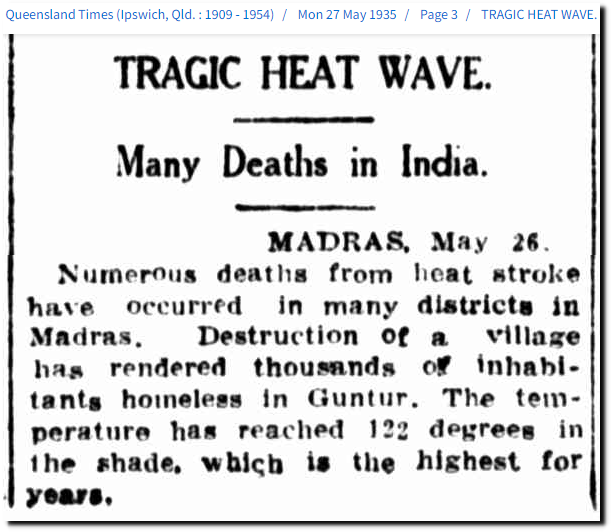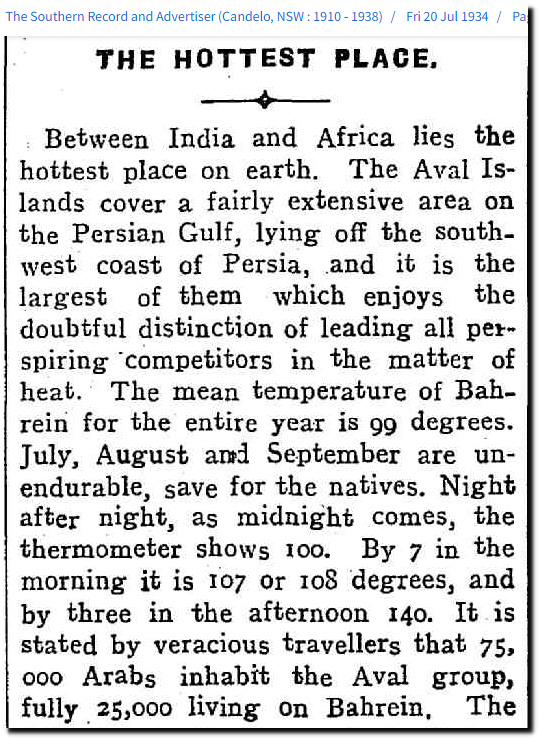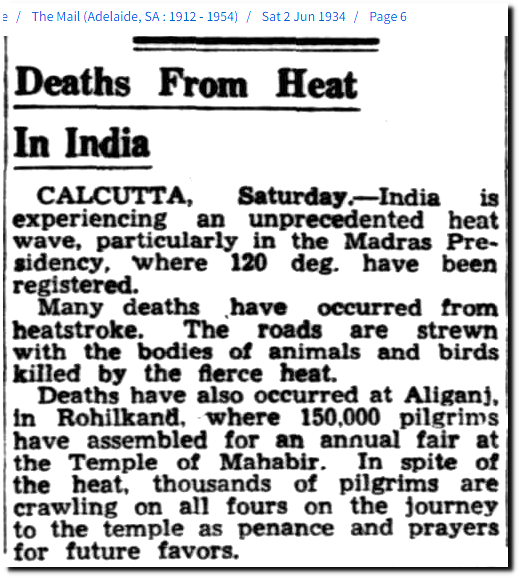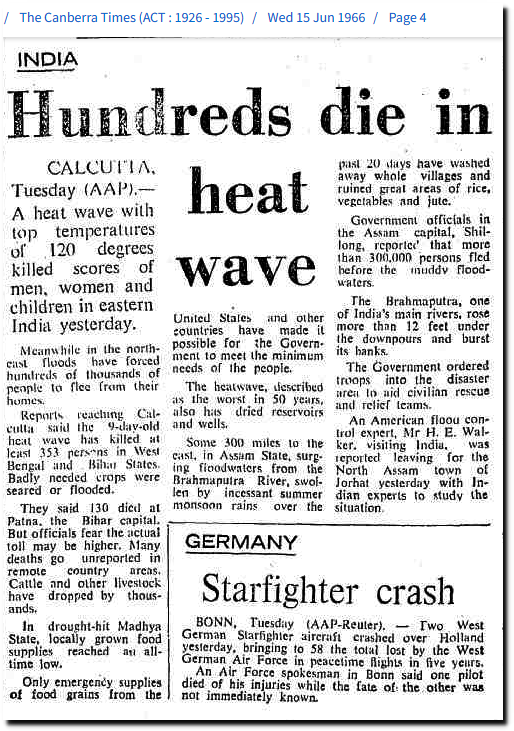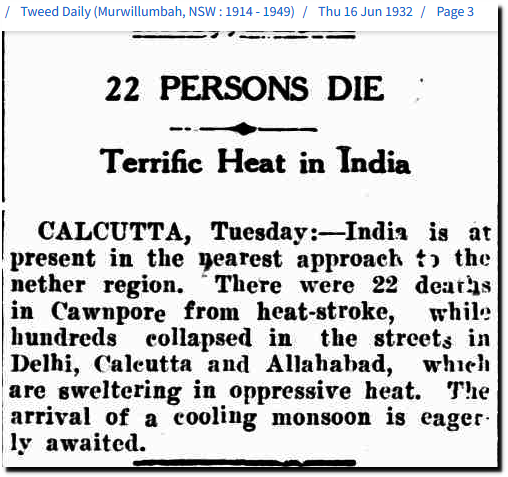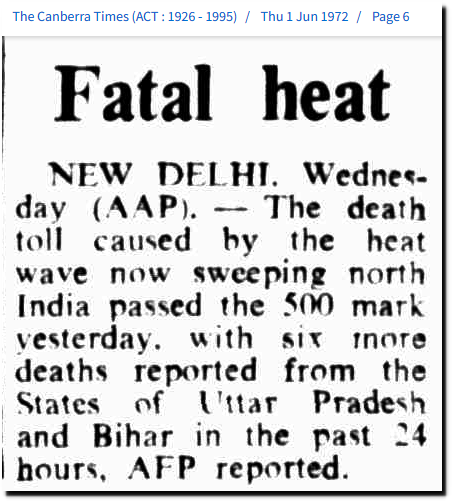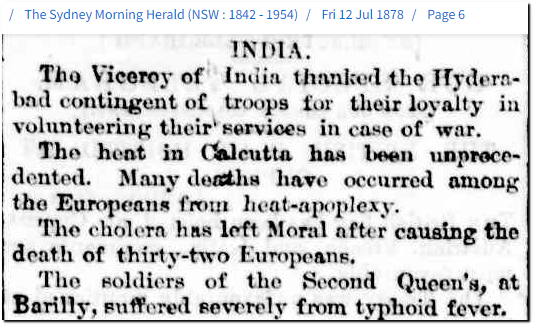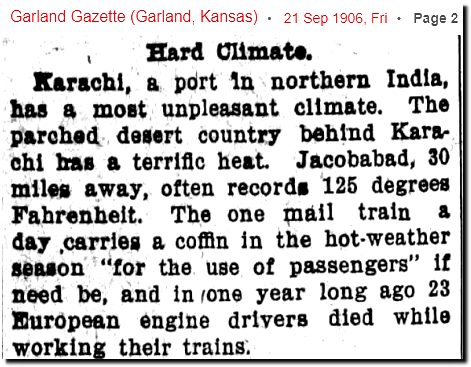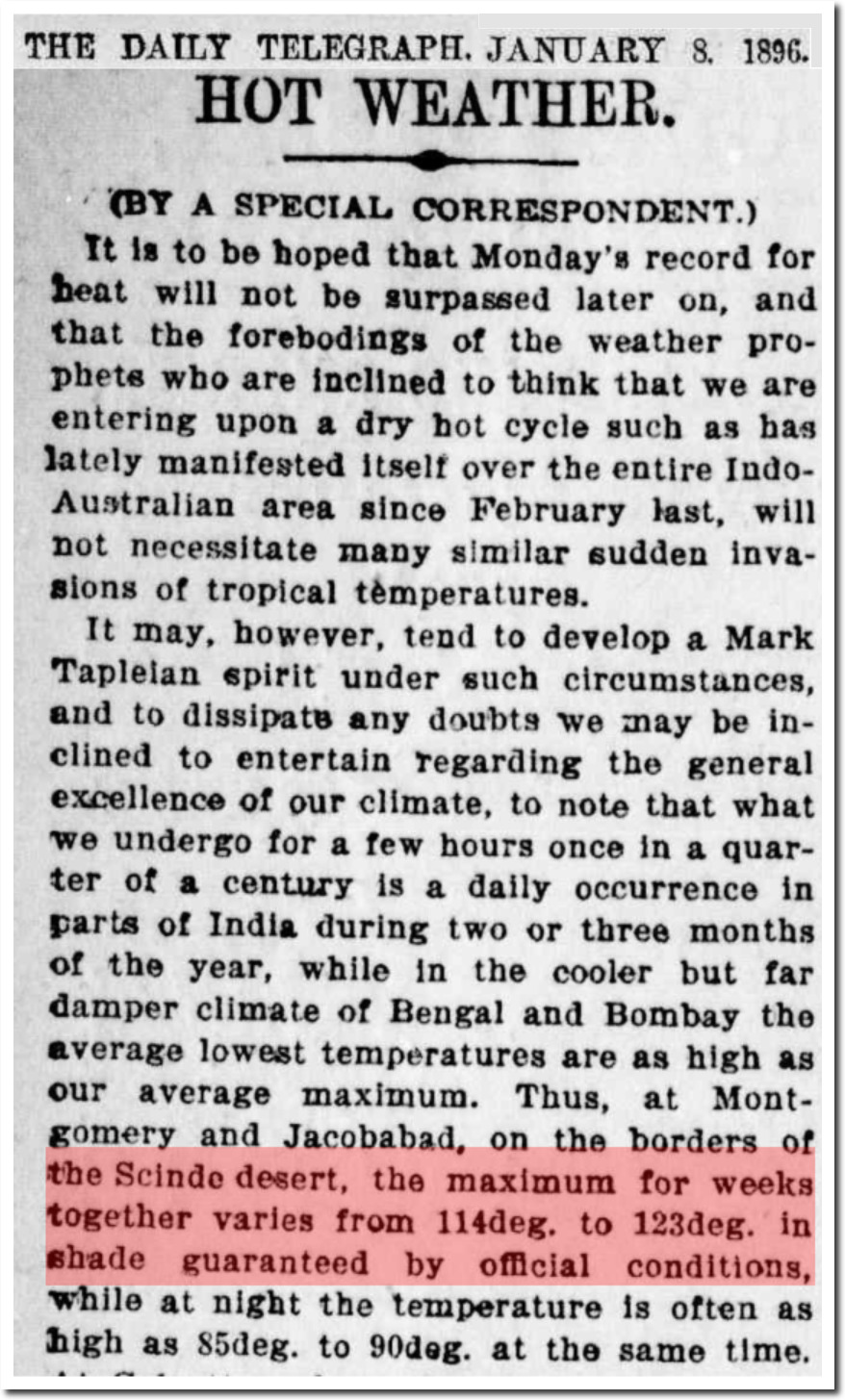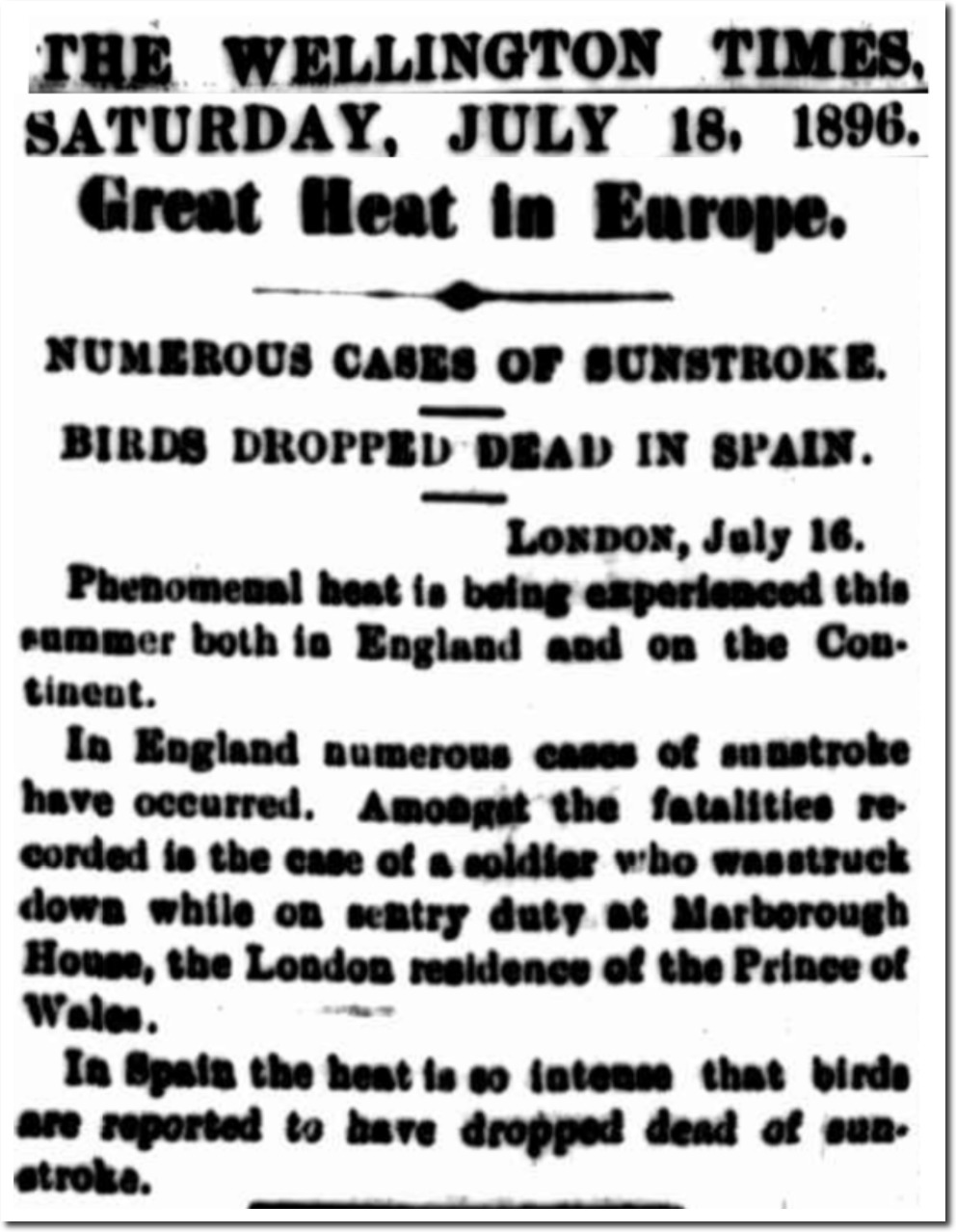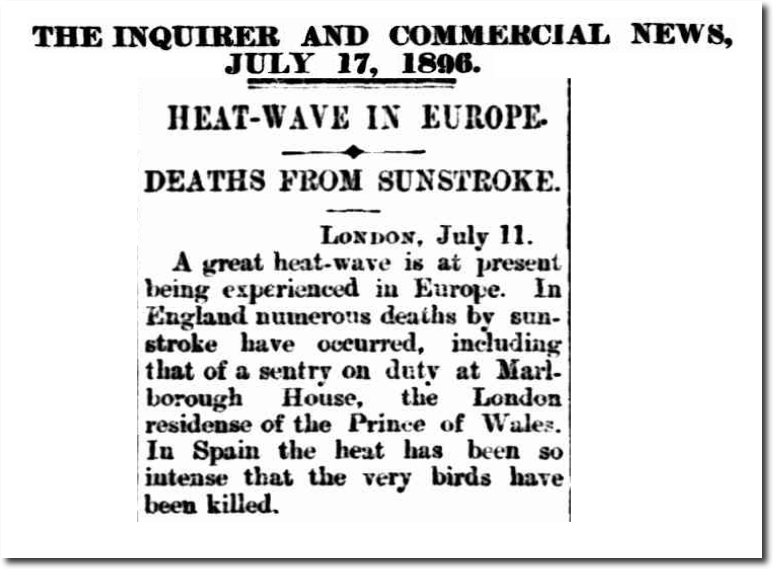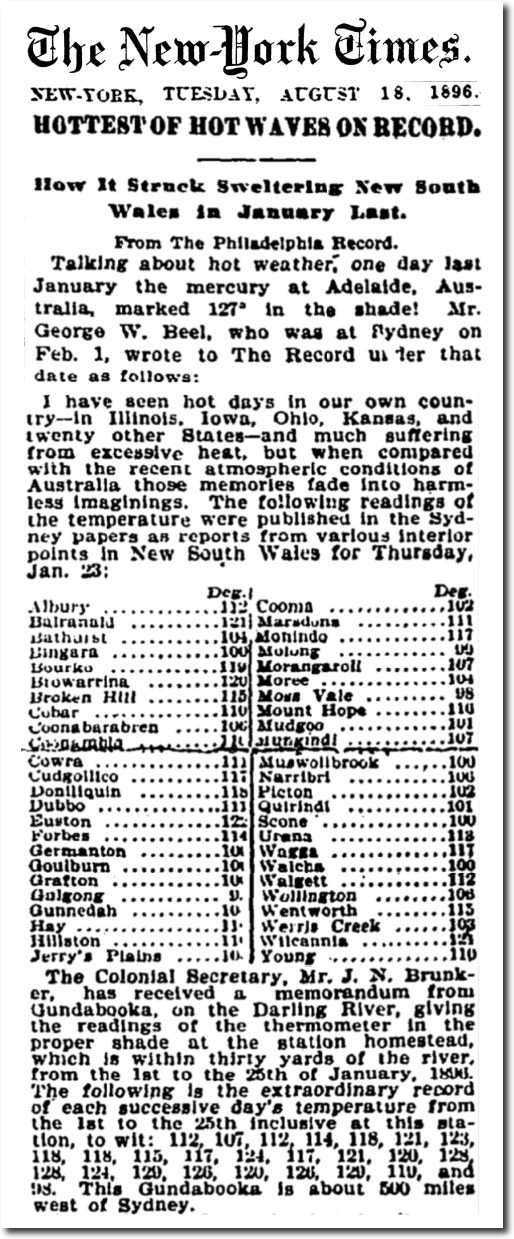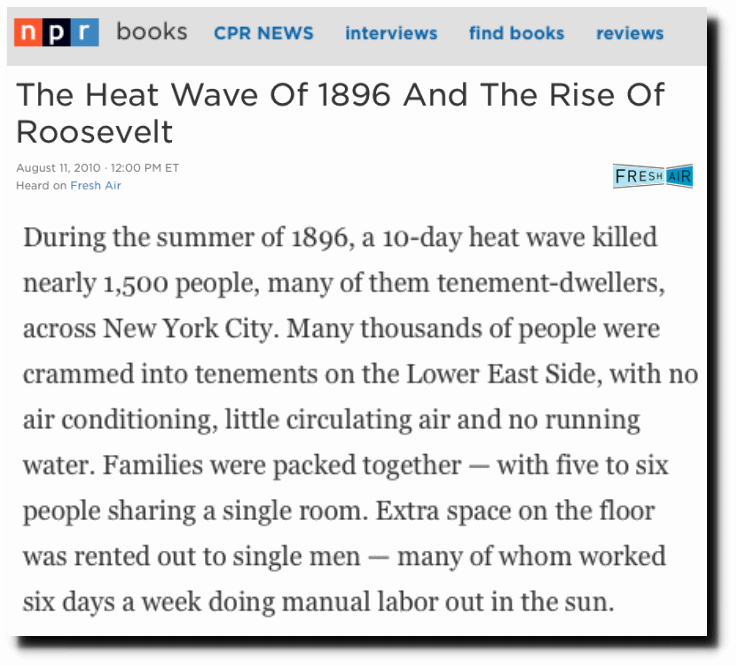“Temperatures in parts of India and Pakistan have reached record levels, putting the lives of millions at risk as the effects of the climate crisis are felt across the subcontinent.
The heatwave has also been felt by India’s neighbor Pakistan, where the cities of Jacobabad and Sibi in the country’s southeastern Sindh province recorded highs of 47 degrees Celsius (116.6 Fahrenheit) on Friday”
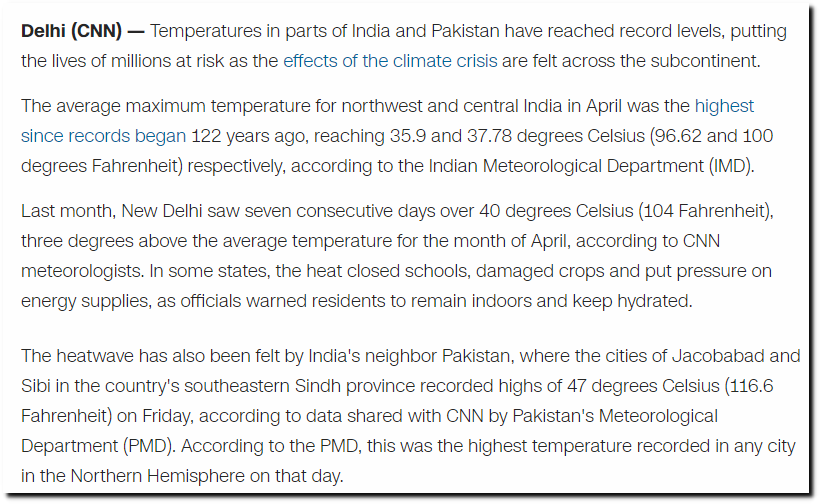
India and Pakistan heatwave is ‘testing the limits of human survivability’ – CNN
April temperatures over 100F were normal in in India in 1849.
“We entered Agra on the 7th of April ; rejoiced at having hitherto escaped the noxious effects of the hot season in this climate, and not less so to find a shelter from its intensity in the ingenious construction of the dwellings herc, lt is difficult in the temperate climate of our German home to form any conception of the burning heat of a Tropical sun. When in Agra, tempted by the artificial lowering of the temperature in the interior of our residence, wo ventured after midday to take a short walk along thu street, the sensation caused by first meeting a rushing stream of air heated up to 31? or 35? (100- or 111? Fahrenheit) was most startling,
Mar5 , 1849
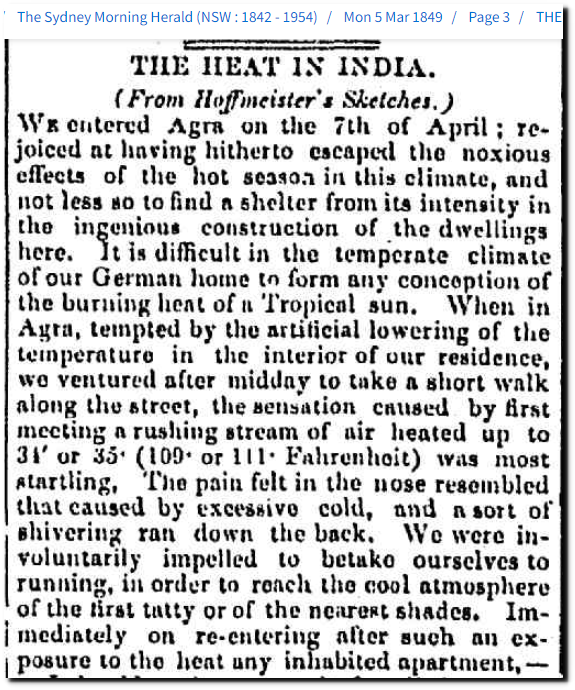
05 Mar 1849 – THE HEAT IN INDIA. – Trove
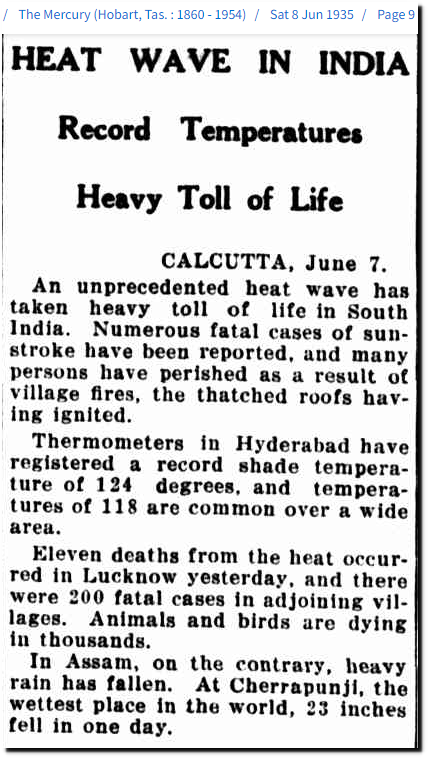
08 Jun 1935 – HEAT WAVE IN INDIA – Trove
27 May 1935 – TRAGIC HEAT WAVE. – Trove
20 Jul 1934 – THE HOTTEST PLACE. – Trove
02 Jun 1934 – Deaths From Heat – Trove
15 Jun 1966 – INDIA Hundreds die in heat wave – Trove
16 Jun 1932 – 22 PERSONS DIE – Trove
01 Jun 1972 – Fatal heat – Trove
The weather is cooler than 1906 and 1896
“Garland Gazette (Garland. Kansas) • 21 Sep 1906. Fri • Page 2
Hard Climate.
Karachi, a port in northern India, has a most unpleasant climate. The parched desert country behind Kara-chi has a terrific heat. Jacobabad, 30 miles away, often records 125 degrees Fahrenheit. The one mail train a day ,carries a coffin in the hot-weather season “for the use of passengers” if need be, and in one year long ago 23 European engine drivers died while working their trains.”
21 Sep 1906, 2 – Garland Gazette at Newspapers.com
“at Montgomery and Jacobabad, on the borders of the Scinde desert, the maximum for weeks together varies from 114deg. to 123deg. ‘ in the shade guaranteed by official conditions, while at night the temperature Is often as high as 85 deg. to 90 deg.”
– January 8, 1896
08 Jan 1896 – HOT WEATHER. – Trove
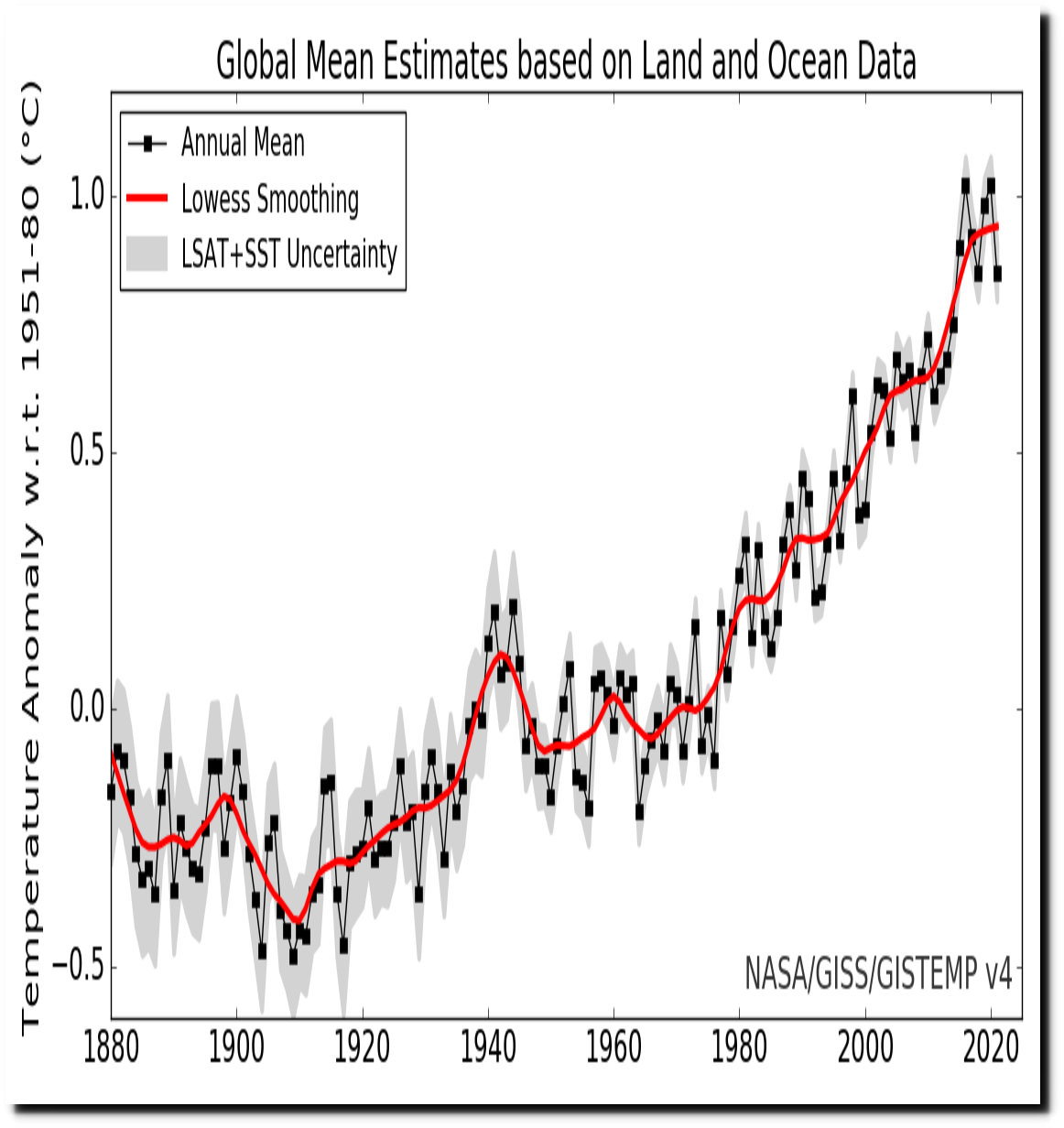
18 Jul 1896 – Great Heat in Europe. – Trove

